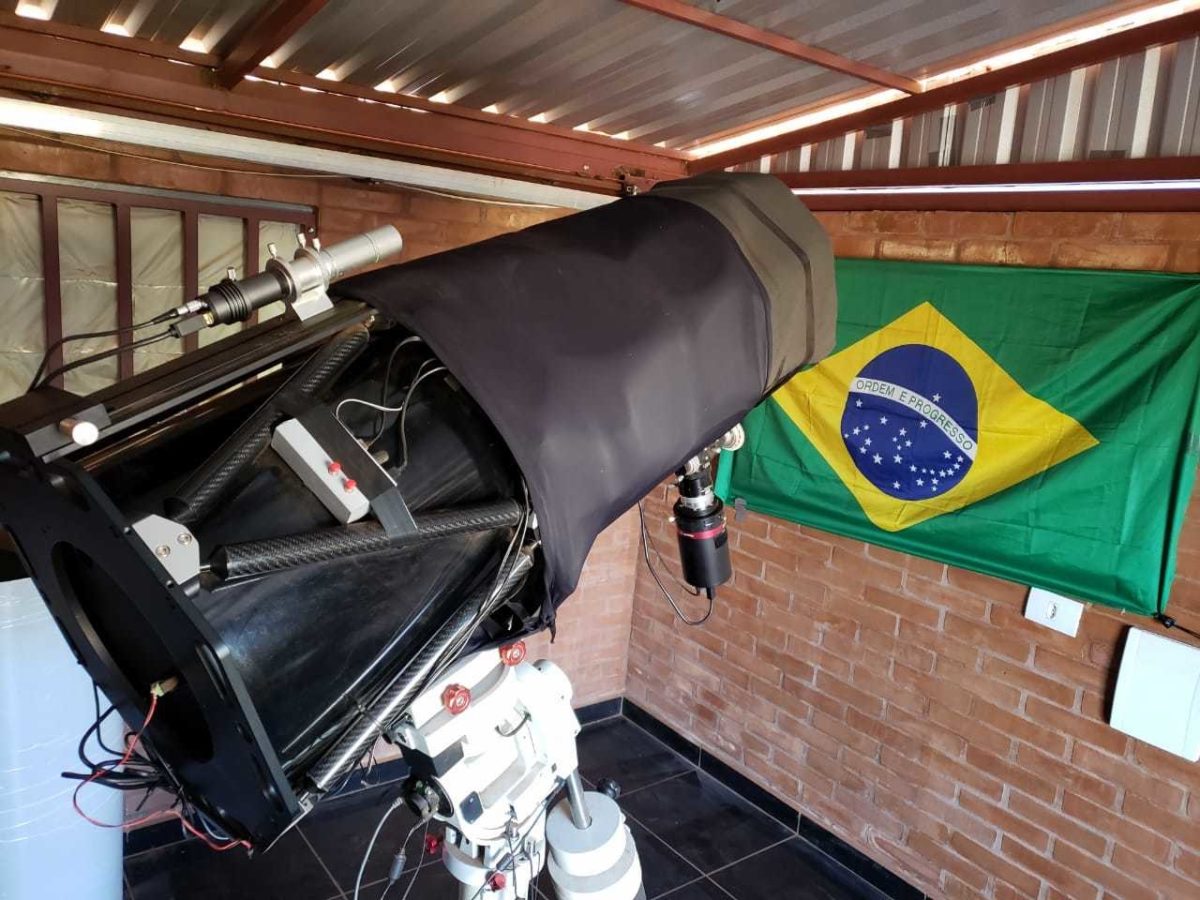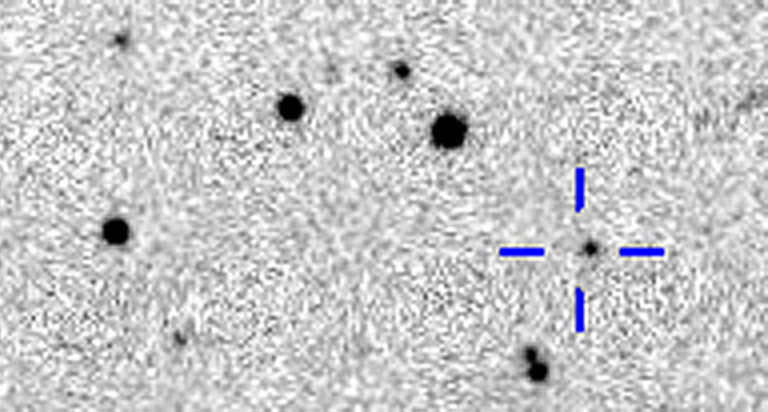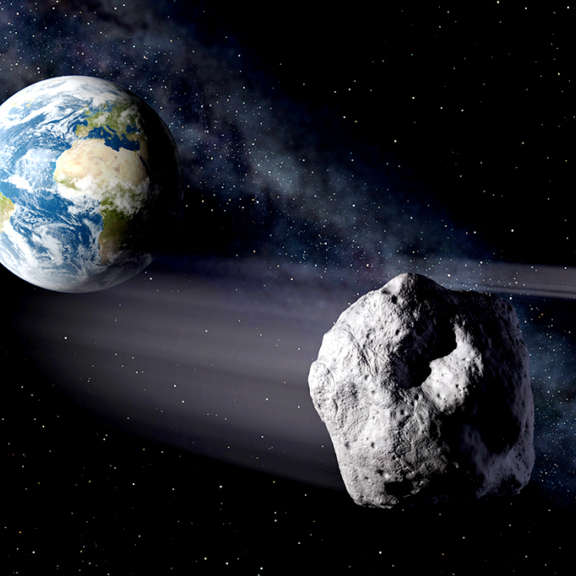Jason Davis • Sep 10, 2020
Planetary Society Grant Winner Discovers Large Near-Earth Asteroid
An amateur astronomer has discovered a kilometer-wide asteroid that would create global devastation if it were to hit the Earth. Thankfully that won’t happen: the asteroid will miss our planet by 40 million kilometers as it passes on 10 September 2020, more than 100 times the distance between Earth and the Moon. But the fact that this relatively large near-Earth object, or NEO, wasn’t detected until now serves as a reminder that there’s much work to be done when it comes to defending our planet from dangerous asteroids.
Asteroid 2020 QU6 Earth approach This animation shows asteroid 2020 QU6 passing between Earth and Mars during a roughly 4-month span between August and November 2020.Video: NASA / JPL-Caltech Small Body Database Browser / The Planetary Society
Defend Earth
How The Planetary Society works to decrease the risk of Earth being hit by an asteroid or comet.
Amateur astronomer Leonardo Amaral discovered the asteroid at the Campo dos Amarais observatory in Brazil. The Planetary Society in 2019 awarded Amaral an $8,500 grant to purchase a more stable telescope mount for better tracking and longer camera exposures. The Society’s Shoemaker NEO Grant program funds advanced amateur astronomers around the world who find, track, and characterize potentially dangerous space rocks. Much of this work follows up on asteroids discovered by large-scale sky surveys, providing observations crucial to orbit determination or asteroid characterization.
Currently, all of the world’s major professional asteroid-hunting sky surveys are located in Earth’s northern hemisphere, making our planet vulnerable to objects sneaking up from south of the equator. Amaral’s southern hemisphere location was a major plus for Shoemaker program reviewers and a key to him making such a large asteroid discovery.

Asteroid 2020 QU6 joins a rogues’ gallery of other current near-Earth objects in the news. Most recently, an asteroid named 2018 VP1 made headlines after scientists determined it would whiz past Earth the day before Election Day in the United States. The asteroid won’t hit Earth, and even if it did, it’s so small that it wouldn’t cause any damage.
“In the news, we hear more and more frequently about asteroid discoveries primarily because we are getting better at finding and tracking near-Earth asteroids,” says Planetary Society Chief Scientist Bruce Betts. “There aren’t suddenly more asteroids, we’re just getting better at seeing them.”
Gene Shoemaker Near-Earth Object Grants
The Planetary Society's Shoemaker NEO grant program funds advanced amateur astronomers to find, track, and characterize potentially hazardous near-Earth objects.
Amaral’s asteroid is an outlier in terms of size. Most estimates say 90% of objects at least a kilometer wide have already been found, and none will hit Earth anytime soon. A more pressing need is the detection of smaller asteroids that can still cause regional-scale devastation.
In 2013, a 20-meter-wide asteroid exploded over the Russian city of Chelyabinsk, shattering windows, damaging buildings, and injuring more than 1,000 people. A century earlier in 1908, a larger asteroid exploded over Tunguska, Siberia, leveling an entire forest. If a Tunguska-sized asteroid were to strike a major metropolitan area, millions of people could be killed.

In 1998, the U.S. Congress directed NASA to initiate SpaceGuard, an effort to find and track 90% of all near-Earth objects 1 kilometer and larger by 2008. In 2005, Congress expanded NASA’s NEO mandate to find and track at least 90% of all NEOs 140 meters or larger by 2020. But since the agency was never given enough funding to fulfill this much more difficult task, only 40% of these objects have been found to date. At current detection rates, it will be another 30 years before NASA meets the goal.
A new NASA space telescope called the NEO Surveillance Mission, or NEOSM, could meet that goal in 10 years, but funding has been difficult to secure. Although it could launch as early as 2025, current funding levels would push the mission into at least the late 2020s. NASA’s current planetary defense budget is $160 million per year—less than 1% of NASA’s total spending and equivalent to 48 cents for each American.
“This discovery reminds us that even though we’ve found most large NEOs, we haven’t found all of them,” says Casey Dreier, chief advocate and senior space policy adviser for The Planetary Society. “We must continue to support ground-based astronomers and invest in new space-based capabilities like NEOSM in order to protect Earth now and in the future.”
The Planetary Society has an ongoing petition for its members and supporters to urge Congress to fund NEOSM for a 2025 launch. The Society is also collecting donations in support of its own planetary defense efforts, which includes the Shoemaker NEO program that supported the discovery of Asteroid 2020 QU6.
The Time is Now.
As a Planetary Defender, you’re part of our mission to decrease the risk of Earth being hit by an asteroid or comet.
Donate Today

 Explore Worlds
Explore Worlds Find Life
Find Life Defend Earth
Defend Earth



